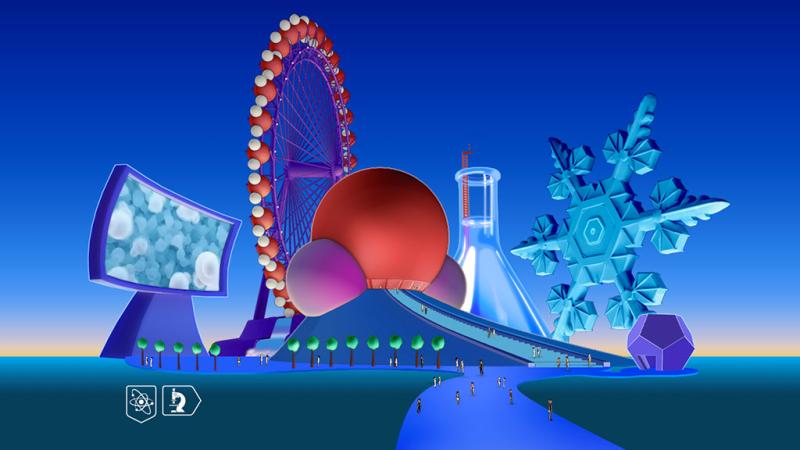Professors at Rensselaer Polytechnic Institute Unveil the Molecularium Project’s New Web-Based “Molecular Theme Park” for Young Students, Parents, and Teachers
October 18, 2012

Rensselaer Polytechnic Institute today unveiled NanoSpace, an online “molecular theme park” populated with more than 25 games, activities, and animations to educate and excite young students about the world of atoms and molecules.
Visit NanoSpace at: http://www.molecularium.com/
From playing “Who wants to be a Quindecillionaire?” in H2OPark, to solving the Polypeptide Puzzler in DNA Land, to button-jamming on Electronz and other retro-style games in the arcade, NanoSpace visitors are having too much fun to notice they’re also learning complex scientific topics.
NanoSpace is the latest platform from the Molecularium Project, which is the flagship outreach and education effort of the Rensselaer Nanotechnology Center. Many NanoSpace games and activities feature the characters Oxy, Hydra, and Mel from the Molecularium animated movies Molecules to the MAX! and Riding Snowflakes.
The mission of the Molecularium Project is to expand science literacy and awareness, and to excite audiences of all ages to explore and understand the molecular nature of the world around them. Funded by the National Science Foundation (NSF) and others, the project is a direct response to the challenge of inspiring more young people to pursue careers in science, technology, engineering, and mathematics (STEM). This is a significant workforce development issue, as the NSF estimates 80 percent of jobs created in the next decade will require some mastery of STEM.
“Science literacy—in every capacity—has never before been so important to our nation,” said Professor Richard W. Siegel, the Robert W. Hunt Professor of Materials Science and Engineering at Rensselaer and director of the Rensselaer Nanotechnology Center. “We realize that not every kid wants to be a scientist, but learning the basics of science—involving molecules and atoms—is critical to the careers that will be available in the next decade, especially as the U.S. continues to fall behind. When learning is fun, it increases a child’s capacity to absorb and retain knowledge. That’s why we are excited to unveil NanoSpace. Kids are interacting, exploring, and having a great time while learning about atoms and molecules, and they are not even realizing they’re learning.”
This concept of “stealth education” runs through every aspect of the Molecularium Project. Executive producers of the project are Linda Schadler, the Russell Sage Professor at Rensselaer and associate dean for academic affairs for the School of Engineering; Shekhar Garde, the Elaine and Jack S. Parker Professor at Rensselaer and head of the Department of Chemical and Biological Engineering; and Siegel. To bring NanoSpace and the Molecularium Project animated movies to life, Schadler, Garde, and Siegel partnered closely with a highly recognized team of artists, animators, programmers, and web designers.
A recent report from the President’s Council of Advisors on Science and Technology estimates approximately 8.5 million STEM job openings will be available over the next decade. But during that same period, there will be a projected shortage of one million qualified graduates. The Molecularium Project and its NanoSpace program are helping to fill this gap by supplementing scarce school-based curricula and teaching children through enjoyable interactions. The activities in NanoSpace teach and reinforce the National Science Education Standards, just as do all other Molecularium Project programs. In addition to the Teachers Guides, which outline measurable goals related to these standards, free educator resources for the Molecularium Project include lesson plans for grades K-4 and 5-8, crossword puzzles, songs, quizzes, printable posters, and more.
Research has shown that students retain more thorough knowledge of a concept through interactive learning. Independent analysts quizzed students before and after seeing Molecularium animations, and found that the core concepts were firmly grasped by young audiences. The percentage of correct answers for younger audiences more than doubled.
“Stealth education works!” Siegel said.
For more information on the Molecularium Project, visit: http://www.molecularium.com and http://www.rpi.edu/magazine/march2009/stealth_education.html